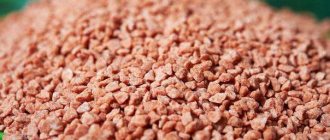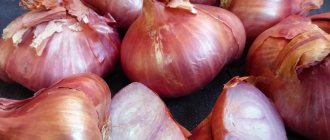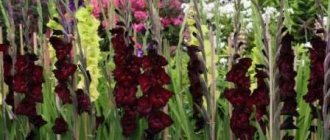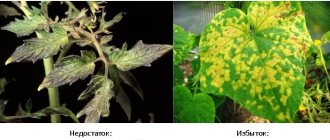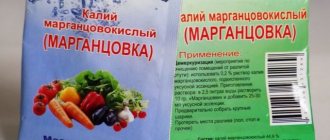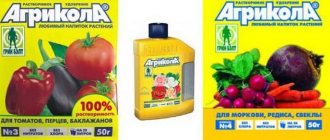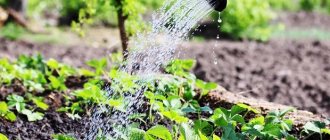Potassium monophosphate: fertilizer characteristics
Monopotassium phosphate is a mineral fertilizer.
It dissolves in water and is absorbed by the soil in a short time, which provides an immediate effect.
Potassium monophosphate - photo
Fruits and vegetables grown with monopotassium phosphate fertilizer are saturated with sugar even during ripening. It will improve the taste and increase the shelf life of the fruit. Nowadays fertilizing is used in gardens and vegetable gardens, as well as for indoor plants.
Composition of potassium monophosphate fertilizer
Potassium monophosphate works when used correctly. The composition of the potassium monophosphate fertilizer is simple, it contains potassium (33%) and phosphorus (50-55%). The presence of two components improves yield and vitamin content. The shelf life of the fruit is also extended.
Important!
The formula for potassium monophosphate is designated as follows: KHPO.
Potassium monophosphate is produced as:
- Powder
- Granule
What does potassium monophosphate look like in the form of granules and powder - photo
Spraying root crops
Root crops should be fertilized with potassium monophosphate only by spraying. Feeding by irrigation will in this case lead to an excessive increase in the size of the root system due to a significant reduction in the quantity and commercial qualities of the tubers themselves. The required concentration of the working solution is 0.02–0.05%; treatment should be carried out twice during the season according to the regulations. The same rules apply to feeding other root crops and edible bulbous plants.
Potassium monophosphate: mechanism of action and properties
The element potassium is involved in the water-salt metabolism of plants. Potassium increases plant immunity to various infectious diseases, improves the taste of fruits and their saturation with sugars. adds density and elasticity to vegetables.
Properties of potassium monophosphate - video
Phosphorus is an important participant in plant photosynthesis; it promotes more active growth of vegetative mass, improvement of the root system, and formation of ovaries.
Important!
Potassium monophosphate has high solubility in water, which allows plants to receive the most necessary nutrients in the shortest possible time.
Once potassium monophosphate is dissolved in water, a lot of phosphoric acid will be supplied to the plants. Moreover, this does not affect the chemical processes in the soil. The component may not absorb phosphorus. It is present in the soil. Potassium interacts with the soil and is absorbed by crops; it does not accumulate in the ground.
Existing analogues
If you don’t have potassium monophosphate on hand, you can replace it with superphosphate, which contains a small amount of nitrogen, which does not cause rapid growth of green mass, and 16-20% phosphorus.
Fertilizer is applied to the soil, but in soils with high acidity it is added only after preliminary incorporation of dolomite flour, lime, and wood ash. Consumption per 1 m2 is 40-50 g of nutritional composition.
Potassium nitrate, containing 13% nitrogen and 44% potassium, is actively used in gardening and horticulture. As a result of its use, the protective forces of plants are increased, the taste and commercial qualities, and the shelf life of the crop are improved.
Potassium monophosphate has earned its popularity due to its high performance characteristics. The mineral composition has a beneficial effect on all agricultural and ornamental plants. But in order to avoid negative consequences, it should be used according to the manufacturer’s instructions.
Advantages and disadvantages
Monopotassium phosphate fertilizer has differences from others, such as monocalcium phosphate.
The benefits of fertilizing include:
- Rapid absorption by soil.
- No harmful components for seedlings.
- Protection from cold during frosts.
- High-quality moistening of dry soil.
- Effective also for all indoor flowers.
- Increasing the number of shoots in young crops.
- Compatibility of potassium monophosphate with pesticides.
- Lack of soil oxidation properties.
- Plant protection from powdery mildew.
Brief overview of potassium monophosphate - video
Many plants require additional feeding. The complex effect can significantly improve productivity.
But monopotassium phosphate also has disadvantages:
- Cannot accumulate in soil.
- Not used to prepare plants for winter.
- Weeds feed on this fertilizer.
- Incompatibility of potassium monophosphate with fertilizers containing calcium and magnesium.
- Not suitable for indoor plants that develop slowly.
Now many factories produce fertilizers. But Bui fertilizers are among the most popular. Optimal composition and efficiency make the products in demand.
Compatibility with other drugs
You may be interested in: How and with what to cover strawberries in the garden to prepare them for the winter of 2021. How and when to cover roses for the winter - preparation features and detailed instructions. How and with what to cover grapes for the winter in different regions of Russia
A positive result from the use of potassium monophosphate can only be observed when the soil is optimally saturated with nitrogen. Therefore, it is allowed to combine this product with nitrogen fertilizers. But the main thing here is to observe the correct ratios of both means.
Also, experts strongly do not recommend using these types of fertilizers at the same time. Therefore, adding a potassium-nitrogen mixture to the soil or spraying the leaves of fruit asthenia should not be carried out. There should be a gap of at least 2-3 days between the applications of both types of fertilizers.
Remember!
Please note: the higher the air humidity, the shorter the interval between the use of drugs should be.
But nitrogen is given only after the phosphorus-potassium solution. However, when processing legumes, alfalfa and clover, which tend to accumulate nitrogen, the fertilizer application scheme changes exactly the opposite.
Pros and cons of potassium monophosphate
high efficiency;
increased fruiting;
stimulation of flowering of non-fruiting plants;
promoting the formation of side shoots in flowers not intended for cutting;
quick and easy absorption of nutrients, their accumulation in plant cells;
absorption of fertilizer components by all parts of flowers and plants;
the impossibility of oversaturating plants with substances included in the fertilizer;
compatibility with pesticides (up to the possibility of producing a complex solution using both types of substances at once);
the ability to treat and prevent the development of certain fungal diseases and powdery mildew;
the absence of ballast substances, which eliminate the risk of side effects from crops on the applied fertilizer;
almost complete absence of influence of the drug on soil acidity;
beneficial effect on soil microflora.
rapid decomposition of solution components;
Possibility of use only in the warm season in non-hot weather with moderate humidity;
hygroscopicity, that is, when wet, potassium monophosphate powder can lose its beneficial properties, so it must be purchased in packages suitable for single use.
Another disadvantage is that the product gives vitality not only to fruit crops and flowers, but also to weeds. In view of this, be prepared for the appearance of unwanted vegetation on the site.
When should you use monopotassium phosphate?
Potassium monophosphate powder and granules can be used as plant nutrition.
This fertilizer is used for:
- Seedlings. During unfavorable weather, the time for planting in open ground is extended. For root formation with limited nutrition, it is advisable to choose root.
- Excellent flowering and reducing the number of fallen ovaries, improving the yield.
- Long-lasting and high-quality flowering.
- Feeding plants with brown leaves.
FERTILIZERS for the garden and vegetable garden!
• Azofoska • Ammofoska • Nitrophoska
How to use monopotassium phosphate for different crops
First you should familiarize yourself with the rules for using bait. Instructions for using potassium monophosphate fertilizer are indicated on the packaging. It is better to create a solution in small quantities, since its components quickly disintegrate, and after which it will be useless.
There are general rules for diluting potassium monophosphate for seedlings, vegetables, and flowers.
You can prepare a solution based on:
- 10 g of fertilizer is diluted in 10 liters of water - this solution of potassium monophosphate is used for seedlings of various crops;
- 15-20 g per 10 liters of water - this product is used to feed vegetable crops grown in open ground;
- 30 g per 10 liters of water - a solution in this concentration should be used for fruit and berry crops.
Dosage and method of application - photo
According to reviews, the effect of potassium monophosphate is better if foliar sprays are applied to the leaves in the evening. Then the drug does not evaporate for a long period and is able to be absorbed in a short time.
Important!
Potassium monophosphate becomes 30% less effective an hour after creating the solution.
Gardeners highlight another feature of feeding. Wild plants and weeds are highly sensitive to the drug. Therefore, before the procedure, weeding and loosening of the top layer of soil is required.
Potassium monophosphate for seedlings
The use of potassium monophosphate for vegetable and flower seedlings
When creating a solution for irrigation, it is important to maintain the correct concentration. It is created in a ratio of 7-10 g of monophosphate to 10 liters of water. A solution of potassium monophosphate is used for seedlings of flowers and plants.
Potassium monophosphate for strengthening seedlings - video
The first feeding is carried out when the first 2-3 true leaves appear on the seedlings, the second is carried out 2 weeks after picking or planting the seedlings in open ground, the concentration is the same - 7-10 g per 10 liters of water.
Useful article:
How to improve the composition and fertility of the soil in the garden
Tomatoes - feeding with potassium monophosphate
To ensure high-quality feeding of tomatoes, watering with potassium monophosphate should be done no more than 2 times a season. Such actions allow you to get a high-quality harvest. There should be at least 2 weeks between procedures. For this, a 0.15% solution is used. It is advisable to take a quarter of a bucket per bush. 10 liters of solution are used for about 4 adult tomatoes.
Photo of preparation of fertilizing tomatoes with potassium monophosphate
If the year is favorable, the break between waterings will be at least 3 weeks. It is important to consider the pace of plant development. If necessary, between main treatments, foliar spraying is carried out with a solution with a fertilizer concentration not higher than 0.15% of the green part. It is advisable to use a solution with this concentration after heavy rainfall.
Cucumbers - rules for fertilizing potassium and phosphorus
Feeding cucumbers with potassium monophosphate is done by watering them with the solution in the same way as tomatoes. The concentration is the same, but in this case, foliar feeding must be carried out taking into account the type of fruit formation.
Photo of feeding cucumbers with potassium monophosphate using watering solution
During normal fruiting, cucumbers are straight and thick at the base. If they are curved or pear-shaped from the ovary, then this indicates a lack of potassium, so fertilizing in the form of spraying is required. It is preferable to carry out the work before watering. If the cucumbers taste bitter due to a lack of potassium, then it will be too late to perform any procedures.
Potatoes, root vegetables, onions, garlic - fertilizer with potassium monophosphate
Thanks to the use of fertilizers, the harvest will be much better. To do this, spraying is performed. If you water, this will cause an increase in the root system.
Photo of spraying potatoes
The concentration of potassium monophosphate for feeding potatoes, beets, carrots, onions, garlic and other similar vegetables should be 0.1-0.2%. It is advisable to carry out treatment 2 times during the season.
The same rules apply to feeding root crops and bulbous plants.
Interesting article:
Rules for fertilizing strawberries for a good harvest
Berry and fruit trees
To treat trees and shrubs (watering or spraying), a concentrated solution of potassium monophosphate is used: 30 g of the substance is needed for 10 liters of water. Although, according to some instructions for using this product for berry crops, the traditional concentration should be used, 15 g per 10 liters. Be sure to read the instructions and annotations before processing plants!
Photo of spraying a fruit tree
For a bush, the solution consumption is 7-10 liters per square meter. m. Taller trees require 15-20 liters. The use of fertilizing will improve the yield many times over.
Feeding berry bushes and fruit trees with potassium monophosphate is carried out in three stages:
- immediately after flowering;
- 2 weeks after the first;
- in autumn, mid-September.
Useful article:
How to feed raspberries
Potassium monophosphate for flowers
For flowers, fertilizer is used when the buds open. If the year is favorable, the seedlings are watered with a 0.1% solution. The norm is 3-4 liters per square meter. m.
Photo of spraying flowers
If the flowers have 3-4 leaves, then for early flowering they are sprayed with 0.02% potassium monophosphate. Outdoor flowerpots and hanging flowers should be fed, just like ground plantings. Such fertilizers are used for many flowering plants: petunias, tulips, phlox, roses.
Application for grapes
Using one MFC is not enough, and it is not advisable. Because the culture is highly dependent on magnesium. In the second half of their life, the grapes are fed potassium magnesium, which can quickly leach. Therefore, in cool, damp times, preferably in the fall, in September, you can apply a one-time fertilizer, preparing the plant for winter.
Fertilizer can be applied to the grapevine through watering and foliar feeding “on the leaf” in the traditional concentration of 15 g per 10 liters of water.
Indications for use
Potassium monophosphate solution can be used to treat:
- Seedlings. Spraying, watering and other methods of fertilizing are usually carried out in favorable or moderately successful years, when planting of crops is delayed due to bad weather. But in unfavorable seasons it is best to use root wine. It stimulates the formation of roots at the box-pot stage, which makes it possible to increase productivity when planting seedlings is late.
- Indoor flowers, plants. A solution of potassium monophosphate is excellent for treating hanging and potted crops.
- Horticultural fruit crops. They are processed to extend the flowering period with further stimulation of intensive fruiting.
- Ornamental crops of open ground. We are talking about flowers and other plants that are not indoors, but grow in gardens or beds and are not used for food. Treatment of such crops with potash fertilizer maintains the active flowering phase.
On a note! This fertilizer is used mainly for spraying and watering crops.
Spraying
This fertilizing process is carried out primarily for treating indoor and garden plants, as well as for fruit crops growing in the form of shrubs. Fruits growing in the above-ground part or leaves of underground edible crops are also processed.
Watering
Watering with a solution of potassium monophosphate is recommended when it is necessary to feed fruit trees, large shrubs, and underground fruits.
All types of processing must be carried out in strict accordance with the instructions that come with this drug. It is especially important to observe the dosage of the product when diluting the powder and using the finished solution.

